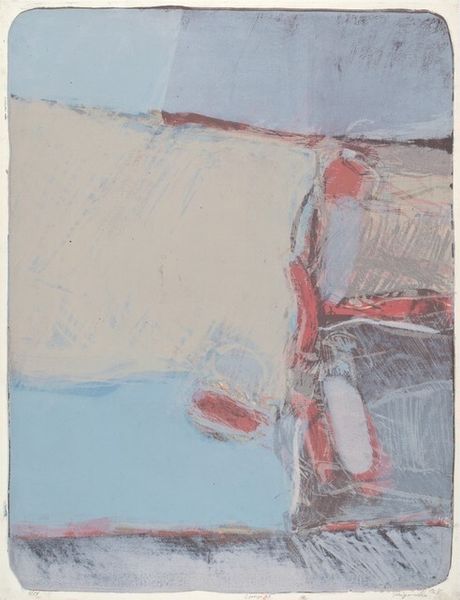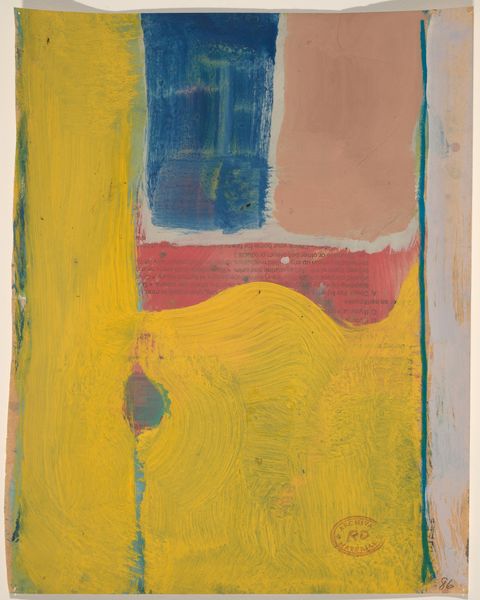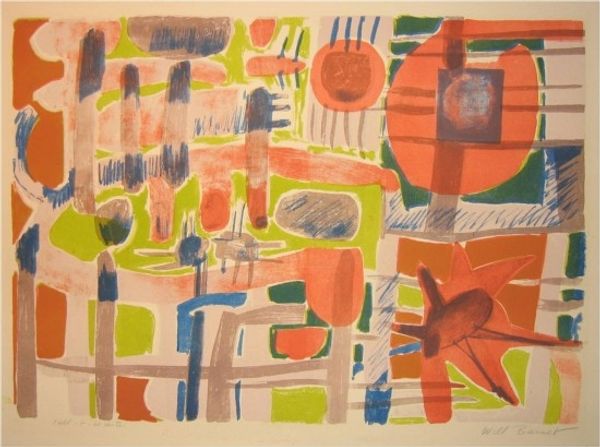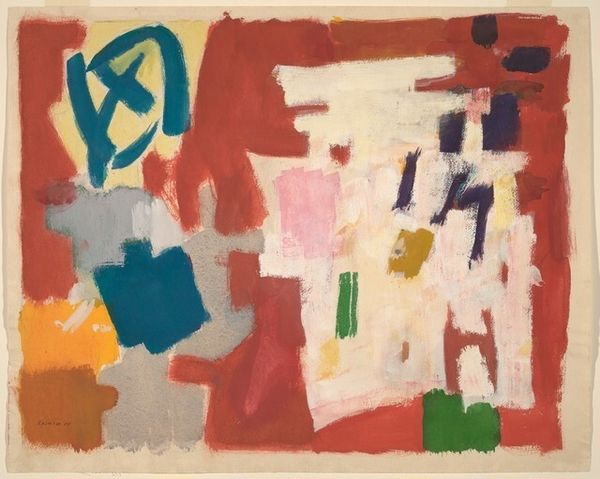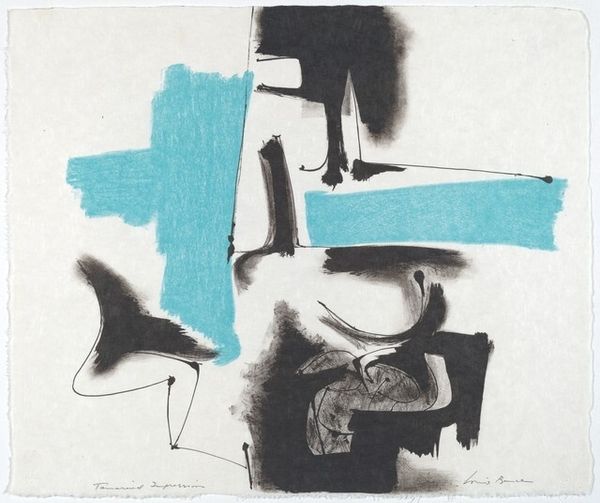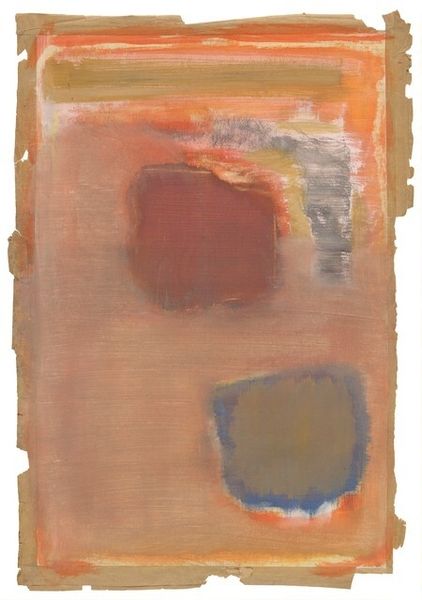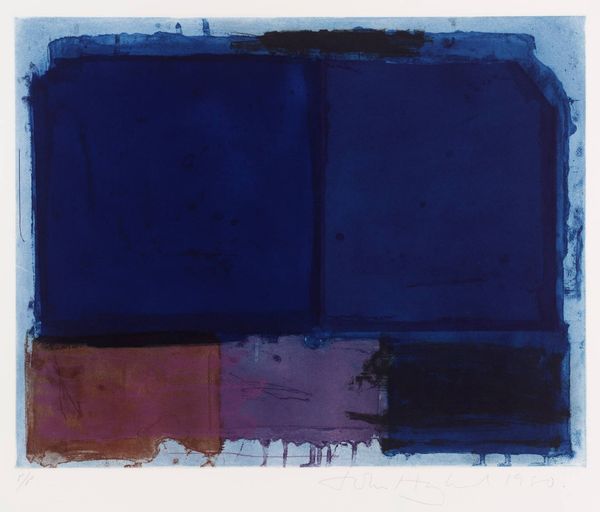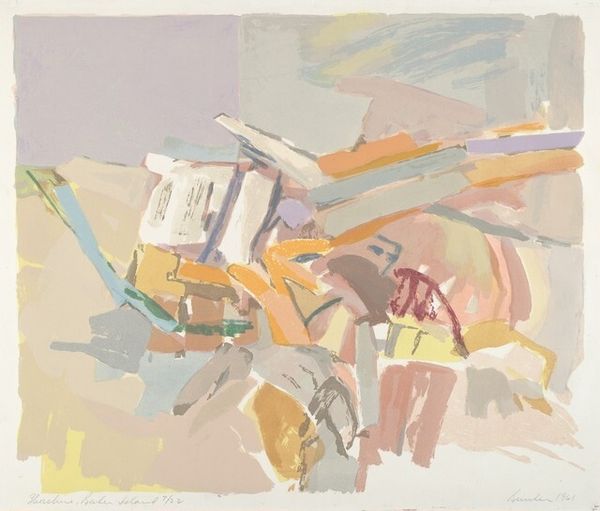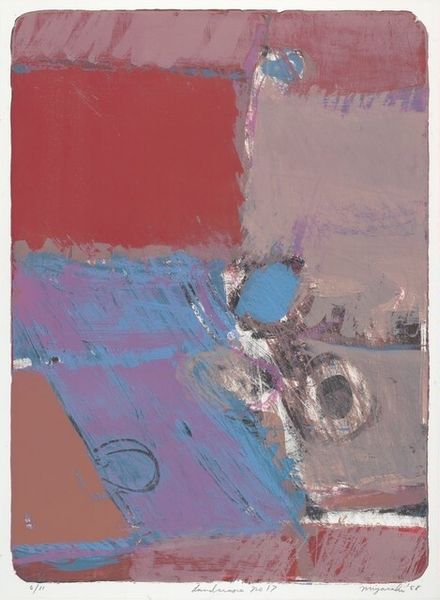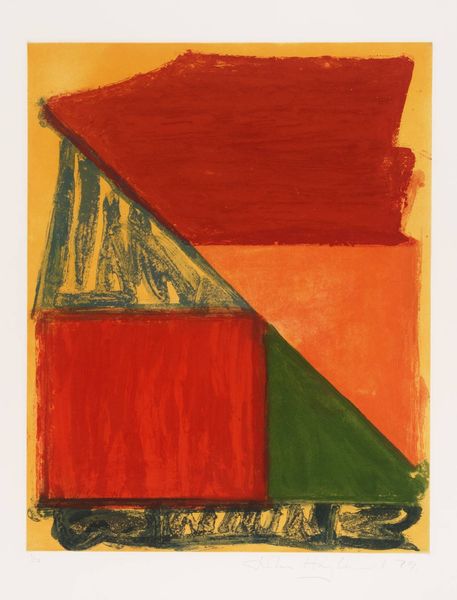
Dimensions: overall: 65.3 x 89.5 cm (25 11/16 x 35 1/4 in.)
Copyright: National Gallery of Art: CC0 1.0
Curator: Welcome. Before us hangs "Scheherazade," a pastel and dry-media drawing crafted by Jacob Kainen in 1986. What's your initial reaction? Editor: It feels...untamed. Like a garden overgrown with memory, a coded narrative trying to push through blocks of color and scrawled lines. Slightly unsettling but deeply intriguing. Curator: I see what you mean. Kainen’s approach is far from mimetic. The work resists a singular reading, leaning into an abstract-expressionist idiom, marked by distinct geometric forms and swathes of pigment. Notice the border almost containing the controlled chaos. Editor: The interplay between containment and expression, you mean? Absolutely. There's this tension that pulls me in, these almost clumsy shapes. That muted green square paired with those hesitant red dashes…it feels intentionally dissonant, a composition fighting itself. Curator: Indeed. It might even evoke semiotic discourse, for how can viewers extrapolate some latent content? It’s difficult, as the artist rejects that very principle, but what if these colours are letters or icons of some grand, forgotten fairytale? Editor: Right, "Scheherazade." Like the legendary storyteller spinning yarns to postpone her doom, maybe Kainen is using abstraction to evade, to suggest rather than state? And isn't it curious that despite the overt abstraction, those sweeping, almost calligraphic lines suggest figures or paths? Curator: It brings me back to the medium. Consider the deliberate softness of the pastel versus those raw lines, likely applied with something else, and their effect. Kainen achieves a striking equilibrium, pushing boundaries through simplicity. Editor: Exactly. So, "Scheherazade" becomes this tapestry woven from the refusal to cohere— a story told through erasure. The absence of direct representation becomes the artwork's narrative strength, an invitation to project. Curator: That's the joy, isn't it? The work presents no easy answers, it is not dogmatic and is evocative because it makes the observer fill in the blanks with the power of pure intuition. Editor: Beautifully put. I’ll be mulling over those "blanks" for quite a while, I suspect.
Comments
No comments
Be the first to comment and join the conversation on the ultimate creative platform.
